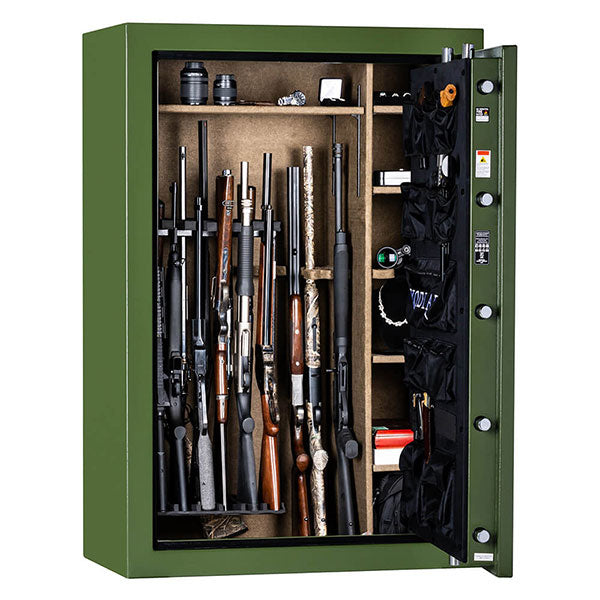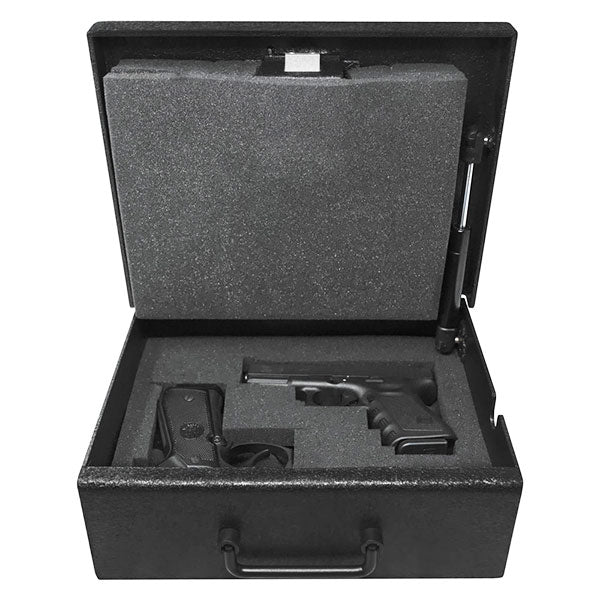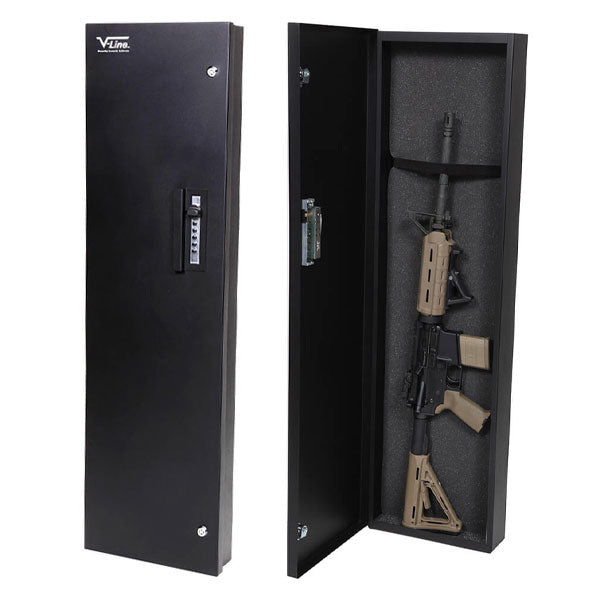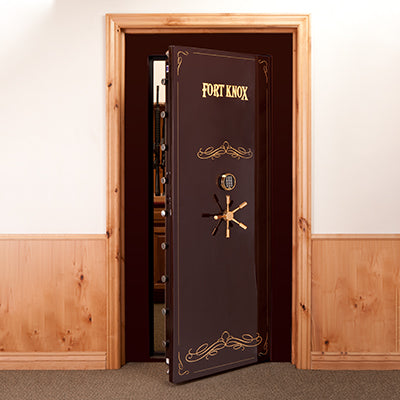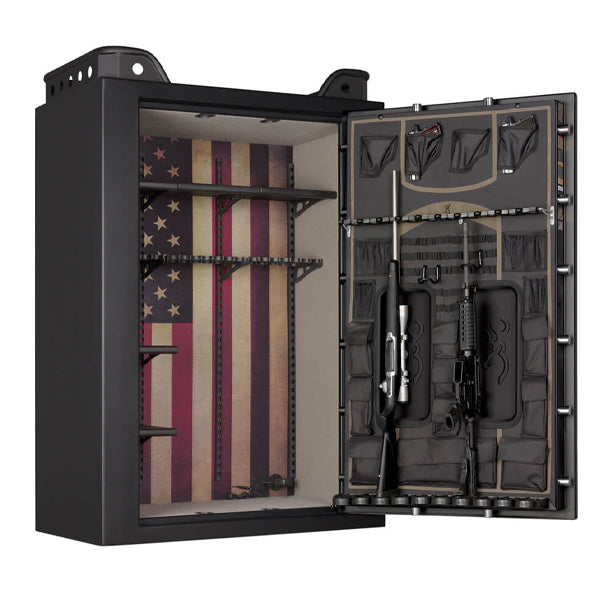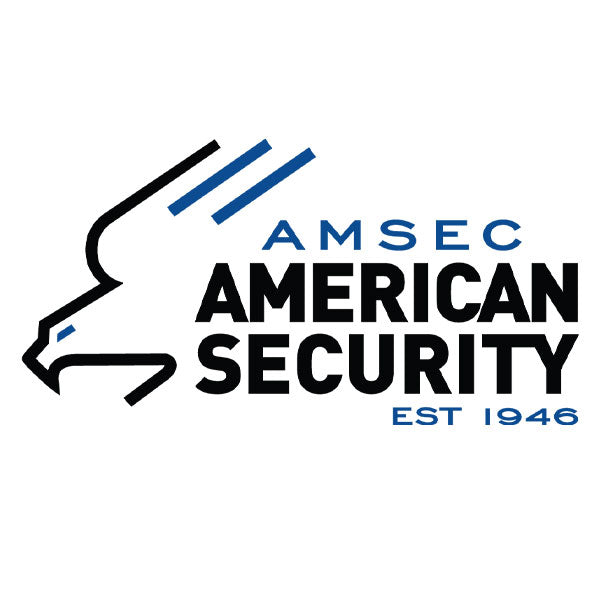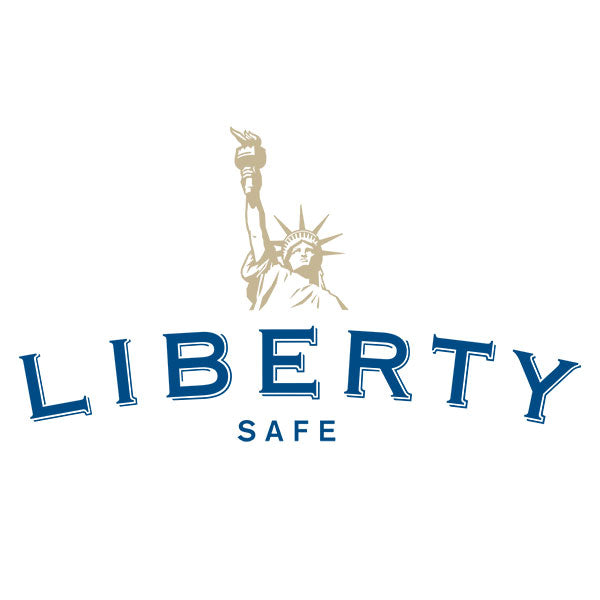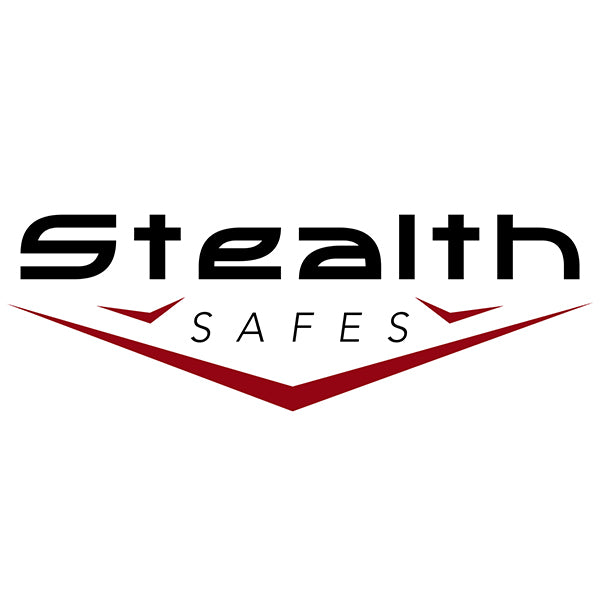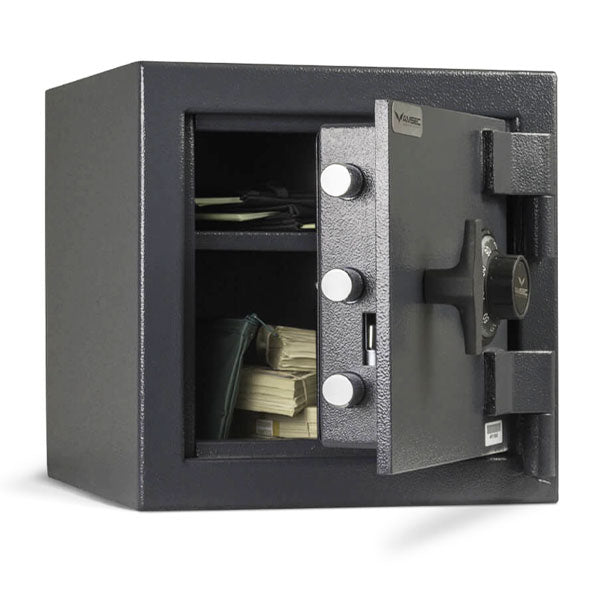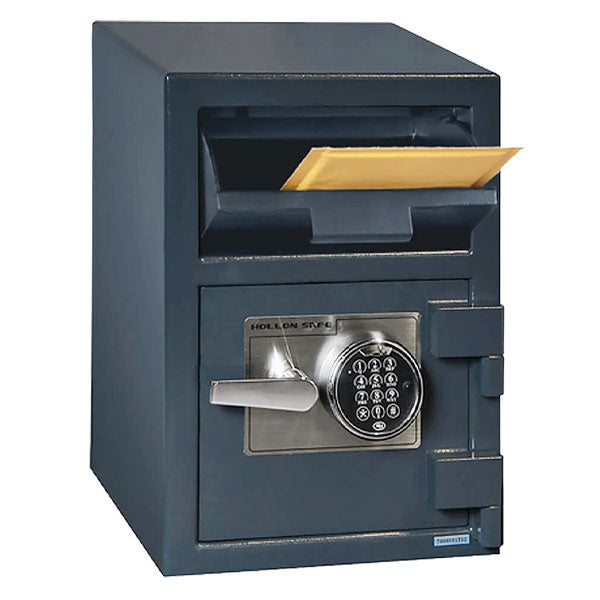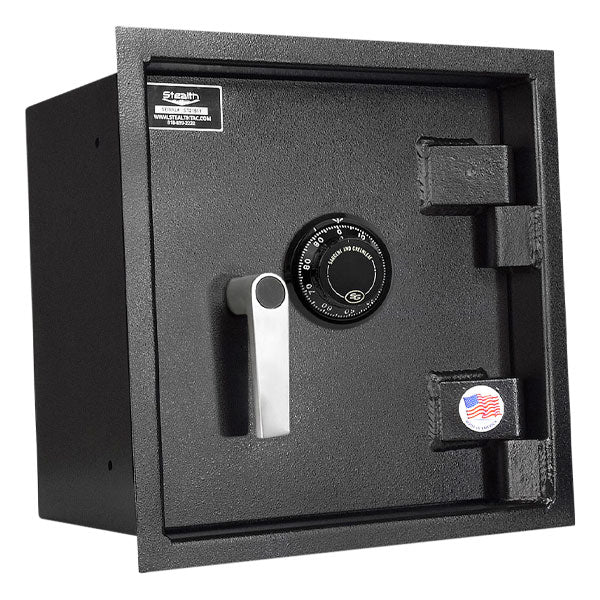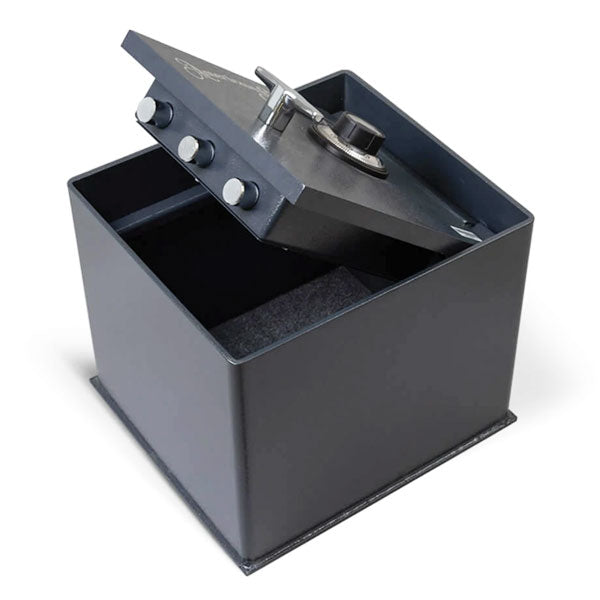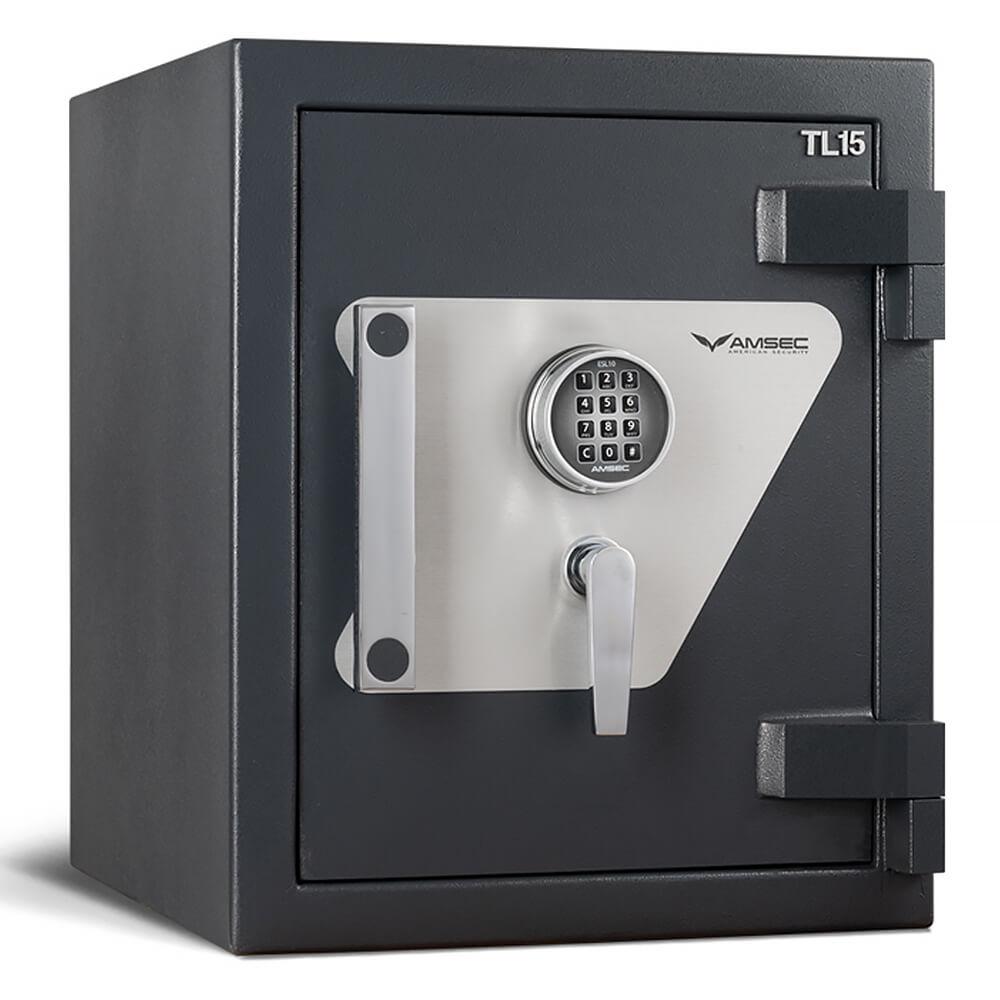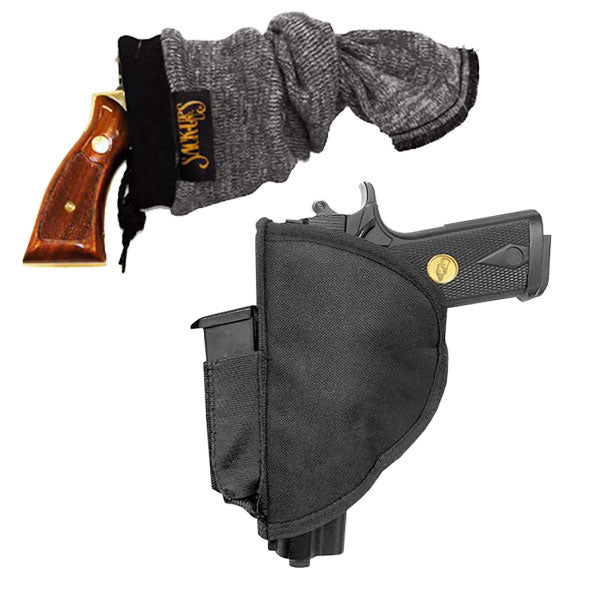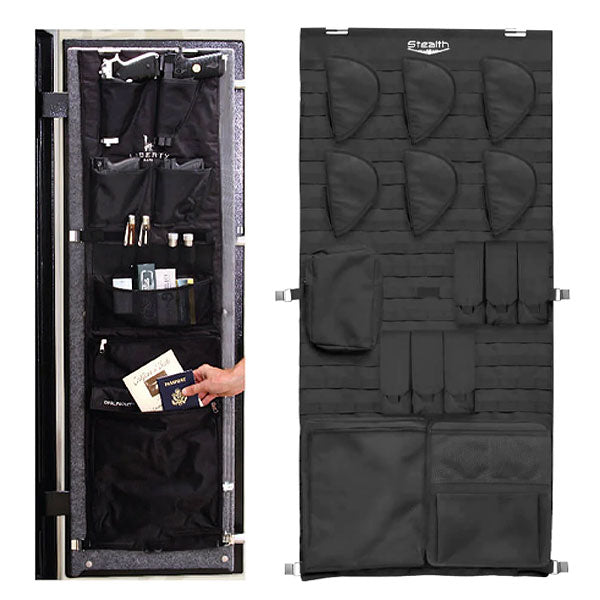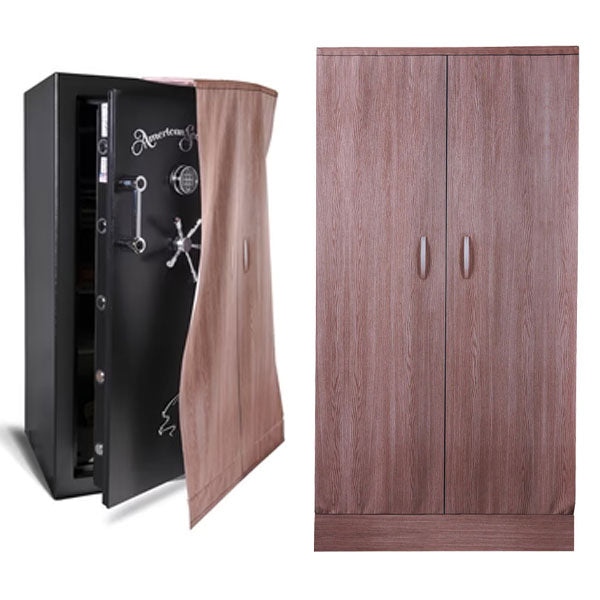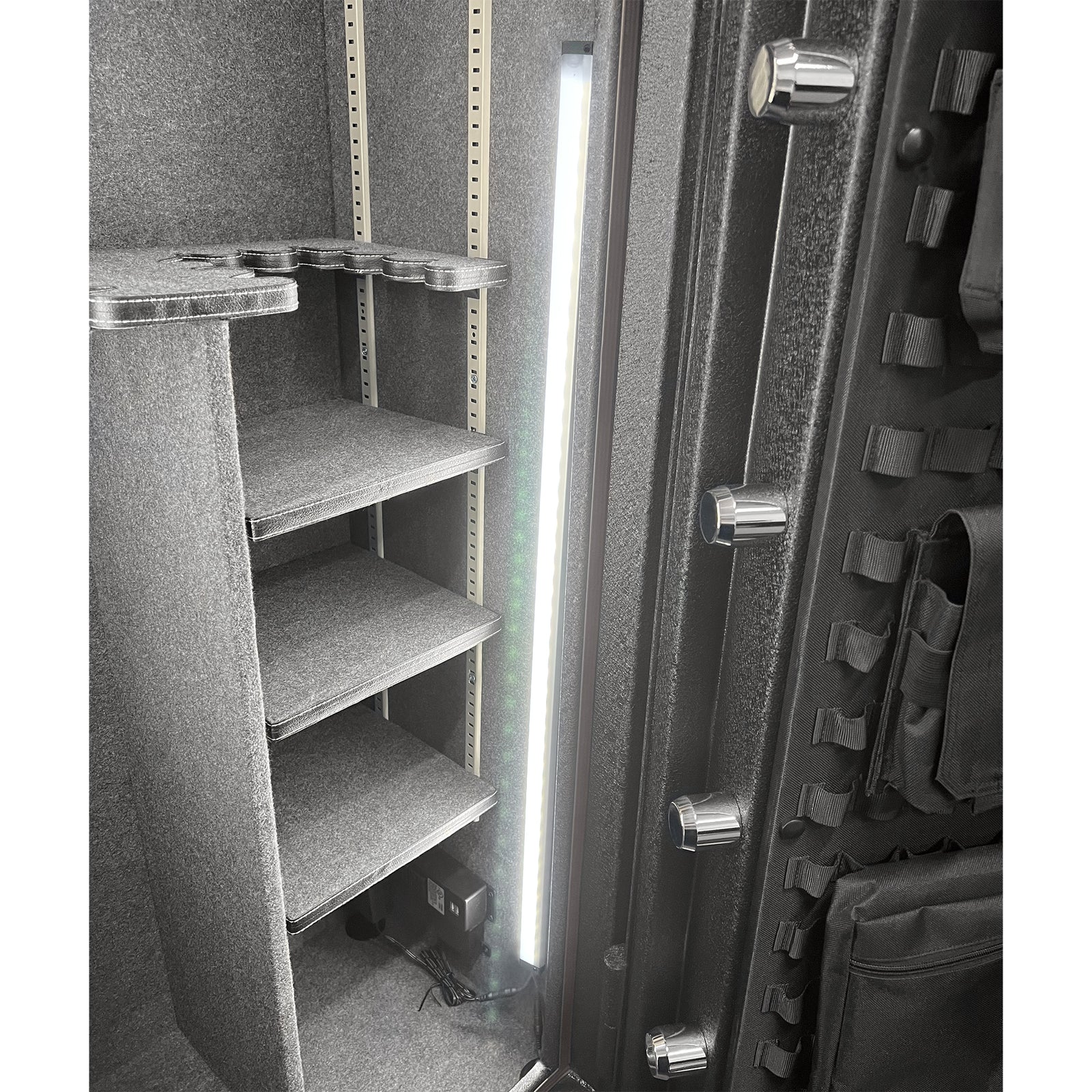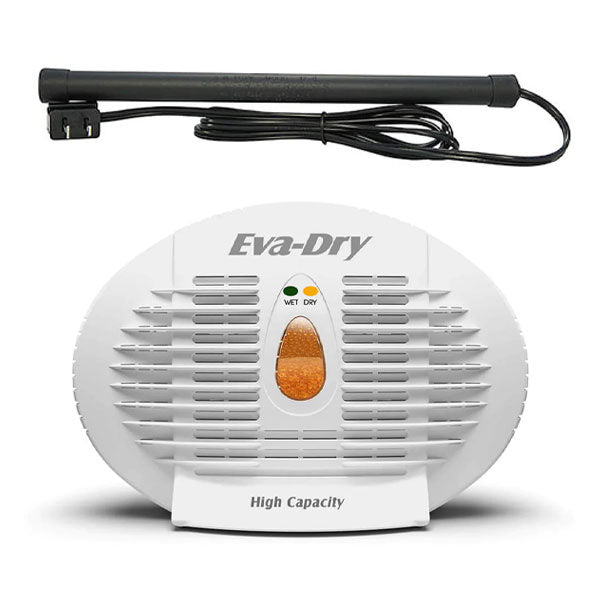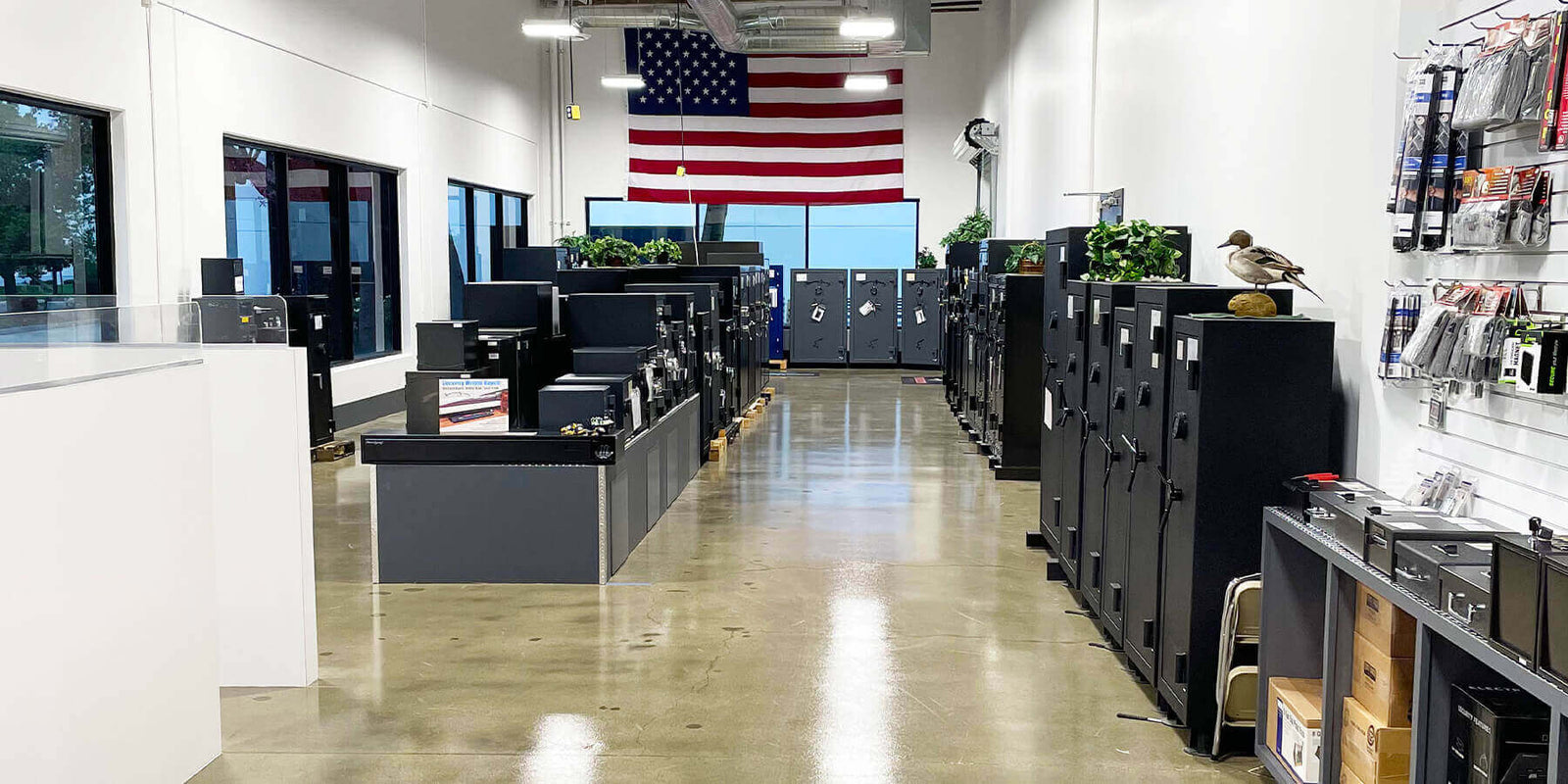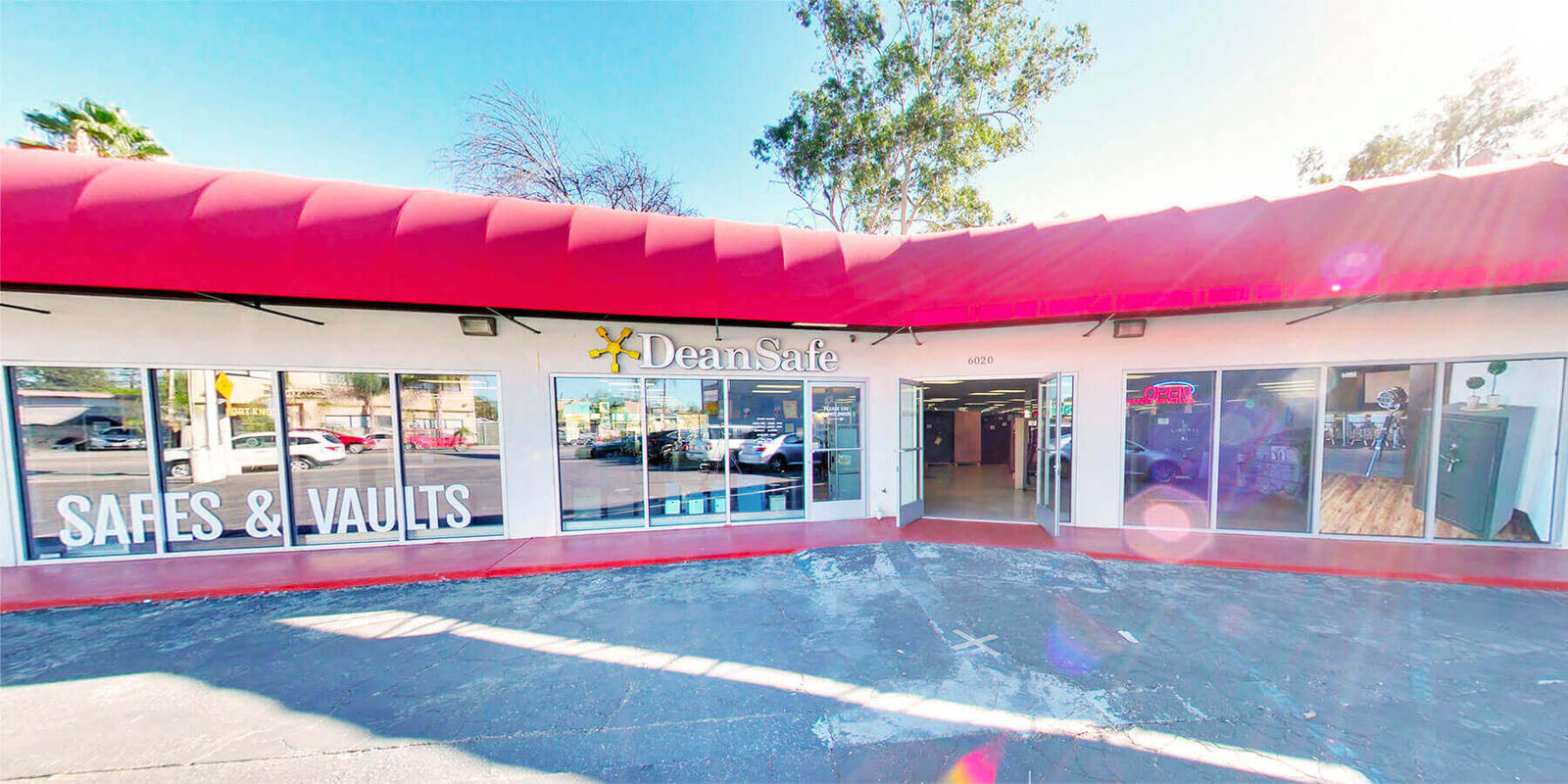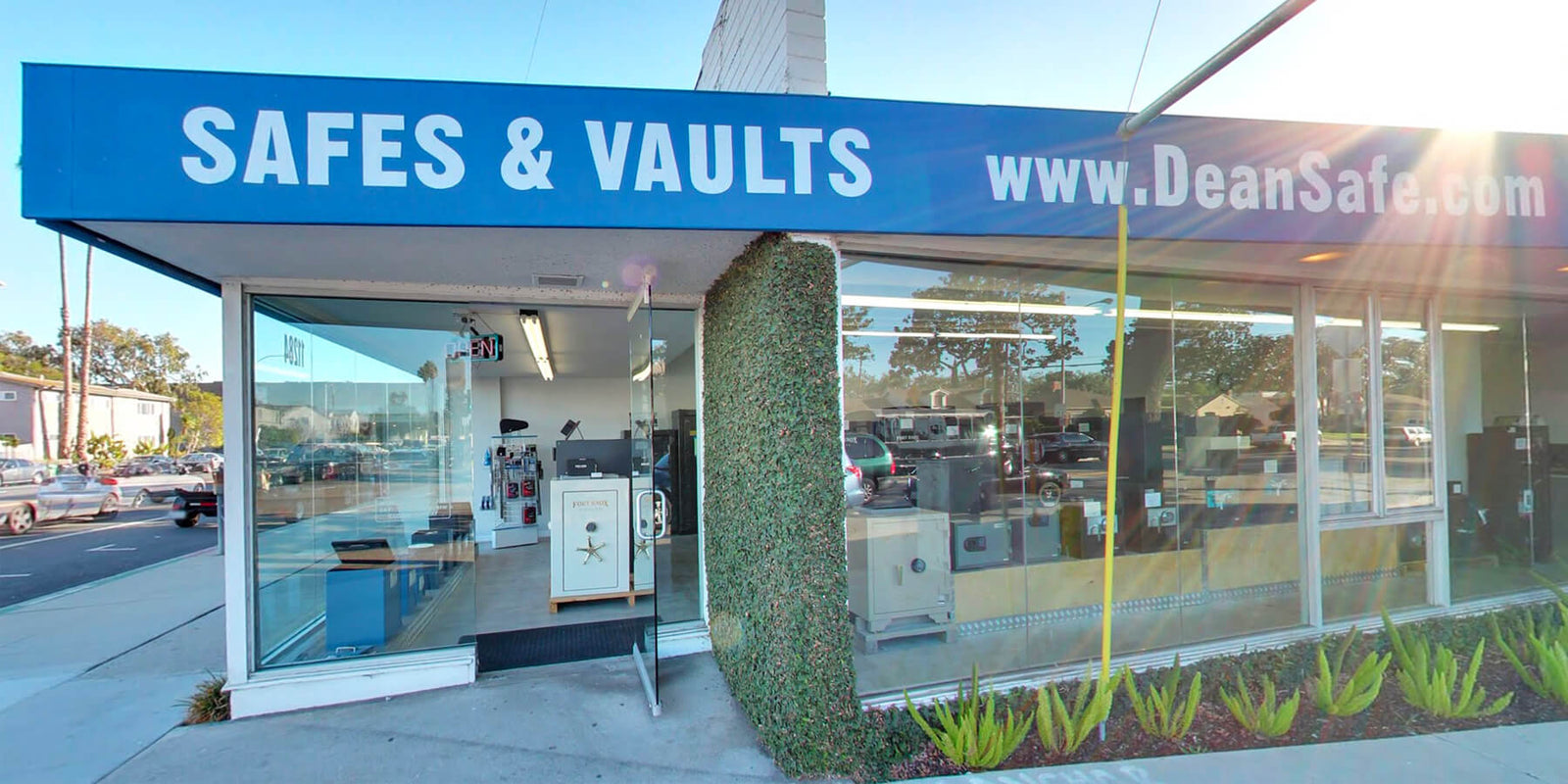An Explanation of Fire Ratings for Home Safes and Gun Safes
An Explanation of Fire Ratings for Home Safes and Gun Safes
Ever wonder how a home or gun safe gets its fire rating? In your search for a safe, you probably have seen a variety of ratings and wondered what they meant. Let's solve that mystery now.
PROTECTION FROM THE UNFORTUNATE EVENT OF A FIRE
Most home and gun safes on the market today are layered with a fireboard very similar to dry wall. This fireboard can be 1/4 to 5/8 of an inch thick. It has a measure of moisture in it that when heated in a fire the moisture is released. This process keeps the interior of the safe cooler for a longer period. The more layers of fireboard, the longer it will stay cooler.Other safes have what is called a "composite" material sandwiched between two layers of steel. This composite material is likeable to a type of concrete, but is usually a bit lighter in weight (for obvious reasons!). This material acts as an insulator, keeping heat from penetrating into the interior of the safe in case of a fire.
There are a few manufacturers using a product called K-wool in a blanket form as another type of insulator installed in safes. While there are manufacturers claiming a 2300° for one hour fire rating, no manufacturer has achieved a third-party fire rating at any level. K-wool is used to insulate pipes because it can be easily formed around a curved surface. Pipes don't normally need to be insulated up to the temperature of a home or gun safe, so buyer beware.
Some manufacturers have their safes tested and certified independently. In an optimal fire test, a safe is placed in a furnace with thermal couplings placed strategically inside the safe and connected to an external computer. The temperature of the furnace is ramped up to a minimum of 1,200° F in no more than 10 minutes, and then maintained for the duration of the test. As the temperature of the furnace is raised, the computer monitors the increase of temperature inside the safe. When the internal temperature of the safe begins to go beyond 350° F, the test is considered to be over.
Other manufacturers label their safes "factory certified". A factory certified test is performed solely by the factory with no independent witness. The rating could be a "guestimate" based solely on the fire rating of the fireboard used without ever actually being exposed to a fire test, or it could even be based on throwing a safe into the middle of a dumpster and setting the trash on fire. There have been instances where the safe was tested in a furnace, but all the couplings were stuck inside a phone book and placed on the bottom floor of the safe. We know that heat rises, so you can imagine how inaccurate the test results are. Sometimes the furnace ramp-up time may take 40 minutes to reach 1,200°, is then only maintained for another 20 minutes, and the safe comes out with a one hour fire rating. Very deceptive. That's not to say that all "factory certified" fire ratings are inaccurate, but again, be aware. Do your homework. Ask questions. It's that important.
Now what does all this mean?
As an example, a safe rated for 60 minutes at 1,200° F means that if you were to have a 1,200° fire for 60 minutes, the inside of the safe stays below 350° for at least a 60 minute period during a normal house fire. If the rating is 90 minutes at 1,680°, then the interior of the safe should remain lower than 350° for at least 90 minutes during a 1,680° fire. Thirty minutes at 1,200° means exactly that.
Certain contents of safes are more susceptible to heat than others. Paper begins to discolor at just above 350° F and scorch at approximately 410° F. It will ignite at 451° F (remember Ray Bradbury's book?) Of course, guns will withstand this heat longer, but plastics and other pliable materials have different melting points depending on their thickness. Coin collectors who have their coins wrapped in plastic should be especially cautious with the fire rating. Obviously, the higher the fire rating, the better. There are safes on the market for extended periods of time as well as higher temperatures.
According to several firemen that I have questioned over the years, a normal house fire ranges from 800 to 1,200° F and will usually, but not always, be under control - if not extinguished - within 20 minutes. This is not the case in a fire storm, which can rage through an entire neighborhood at anywhere from 2,000° F and higher. These fires can level a neighborhood within minutes.
Many factors enter into the equation of fire temperatures. The amount of fuel you have in your home affects the temperature of the fire. Fuel affects the length of the fire as well: the more fuel, the longer and hotter the fire. Obviously if your home is constructed of wood versus concrete block, you are going to have a hotter fire. Also, brick homes can absorb heat at an alarming rate (think brick ovens!).
When storing documents and cash, it is obviously a wise idea to get the best fire rating you can afford. The expense of a good fire-rated safe is sometimes an obstacle to overcome. But ask yourself, "What is it worth to protect the value of what I want to put into the safe?" Sometimes the cost of one item you want to protect costs much more than the safe itself.
When considering the purchase of a gun safe, there are important questions to ask regarding the fire protection:
- What is being used as the fire protection? Wall board or composite material?
- How many layers or how thick is the fire wall?
- Are all the susceptible spots protected with this fire protection? Door jambs, internal hinges? Walls, ceiling and floors?
- How was this safe tested and rated?
- What is the warranty, if there is one, on the safe in case of fire?
When storing especially fragile items inside a safe, you may want to consider purchasing a smaller "fire box" also. Items can be placed in the fire box, and then the fire box placed inside the safe. This will protect the contents for an extended length of time at a higher temperature.
Protecting our valuables from theft is only part of the equation. Fire is always an eminent threat as well.
And one other thought - check with your home owner's insurance agent. Sometimes discounts are available for home owners with a fire-rated safe. Keep your tax documents and business papers in a fire-rated safe? Check with your CPA about a possible write-off. These are just two hidden benefits of owning a good fire-rated home safe.
At the risk of being redundant, do your homework. Call a safe consultant at a local safe store and ask all the questions you need to become informed. If they don't have the answers, call someone else. It's that important and it's well worth the time and effort you put into becoming an educated safe buyer. The peace of mind you will have knowing that your stuff is secure and fire protected will reward you time and again.

